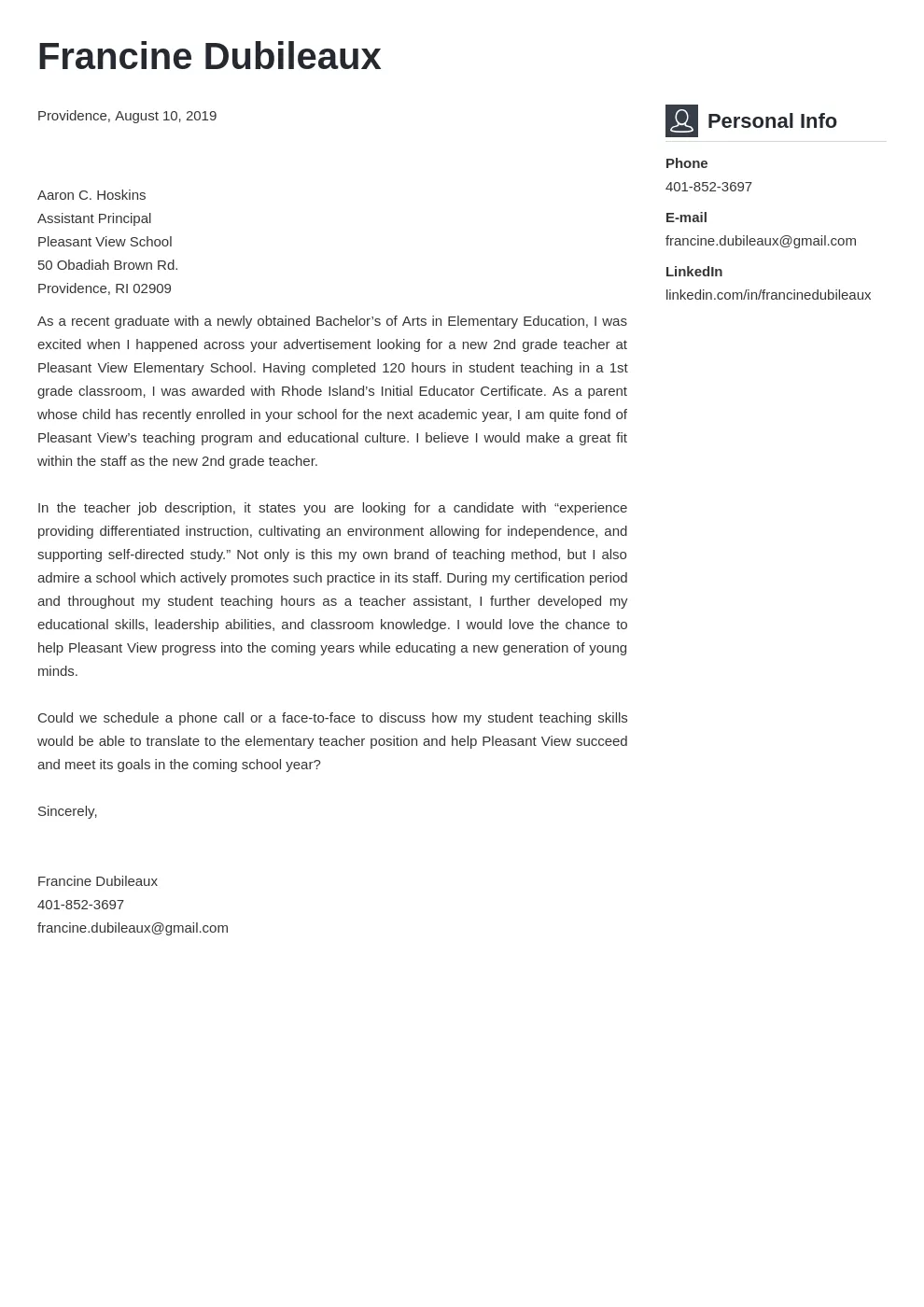Crafting the Perfect Teacher Cover Letter
A well-crafted teacher cover letter is your first chance to make a positive impression on a potential employer. It’s more than just a formality; it’s a powerful tool that can showcase your skills, experience, and passion for teaching. This guide provides top tips and examples to help you create a cover letter that will stand out from the competition and land you your dream teaching job.
Understanding the Importance of a Cover Letter
Why is a cover letter so important? It offers a personalized introduction that a resume can’t always provide. It allows you to explain why you’re the ideal candidate and how your skills and experience align with the specific needs of the school or district. Think of it as your opportunity to tell your story and make a compelling case for why they should invite you for an interview. This is your chance to show your enthusiasm and dedication to the education field.
Highlighting Your Unique Qualifications
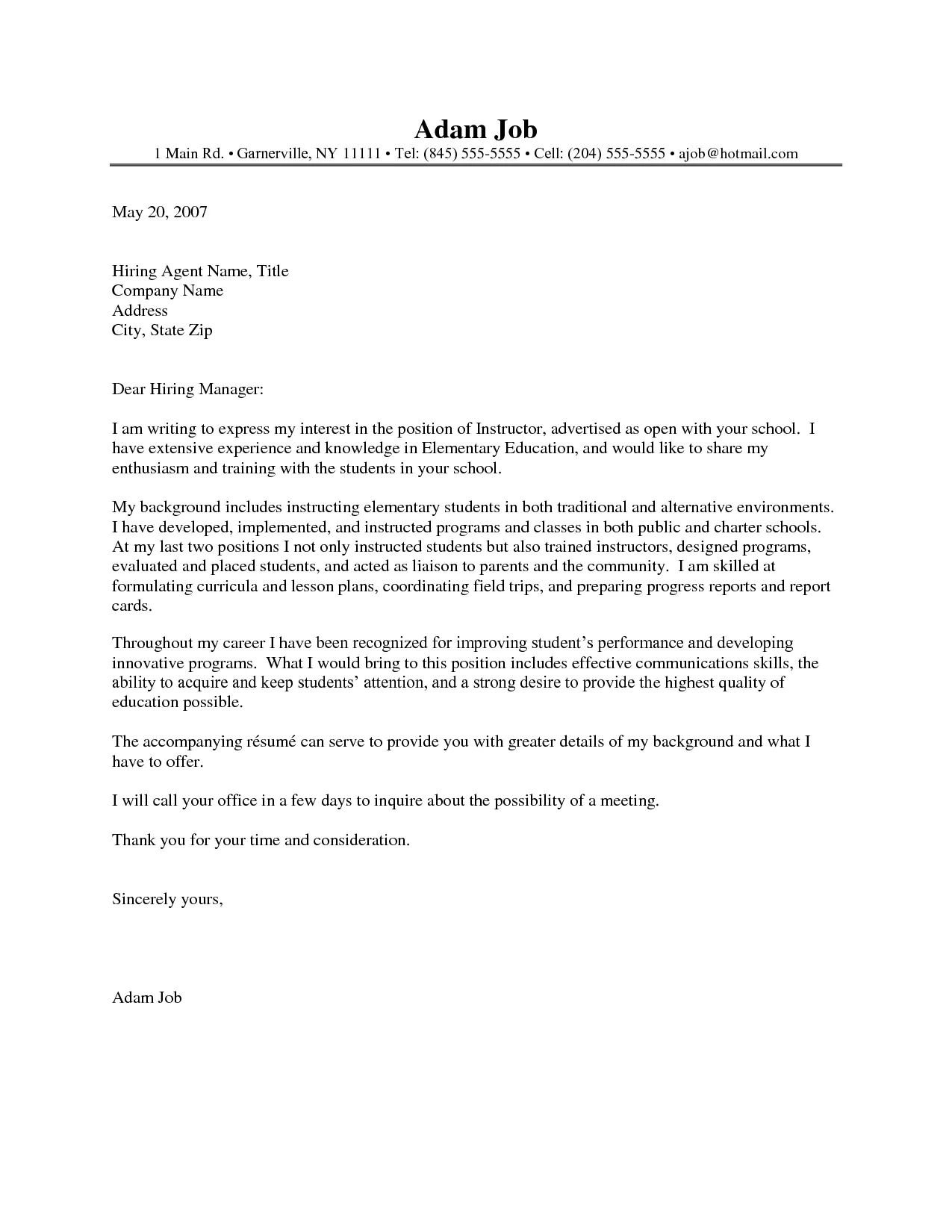
What makes you unique? Focus on the skills and experiences that set you apart from other candidates. Do you have specialized training, such as in special education or early childhood development? Have you developed innovative teaching methods or curriculum materials? Are you proficient in a second language or possess experience with diverse student populations? Highlight these unique qualifications to capture the employer’s attention. Be specific; use examples to demonstrate how you’ve utilized these skills to benefit students.
Showcasing Your Relevant Experience
Your experience is a key selling point. Detail your teaching experience, including the grade levels and subjects you’ve taught. Describe your accomplishments; did you improve student test scores, implement new programs, or receive positive feedback from parents or administrators? Quantify your achievements whenever possible, using numbers to illustrate your impact. For example, mention that you increased student engagement by a certain percentage or successfully implemented a new reading program.
Structuring Your Teacher Cover Letter
A well-structured cover letter is easy to read and makes a strong impression. Follow a standard format to present your information clearly and concisely. This format includes a header, salutation, introductory paragraph, body paragraphs, and a closing paragraph. Each section plays a crucial role in conveying your message and making a professional impression. Adhering to a clear structure shows your professionalism and attention to detail.
Header and Contact Information
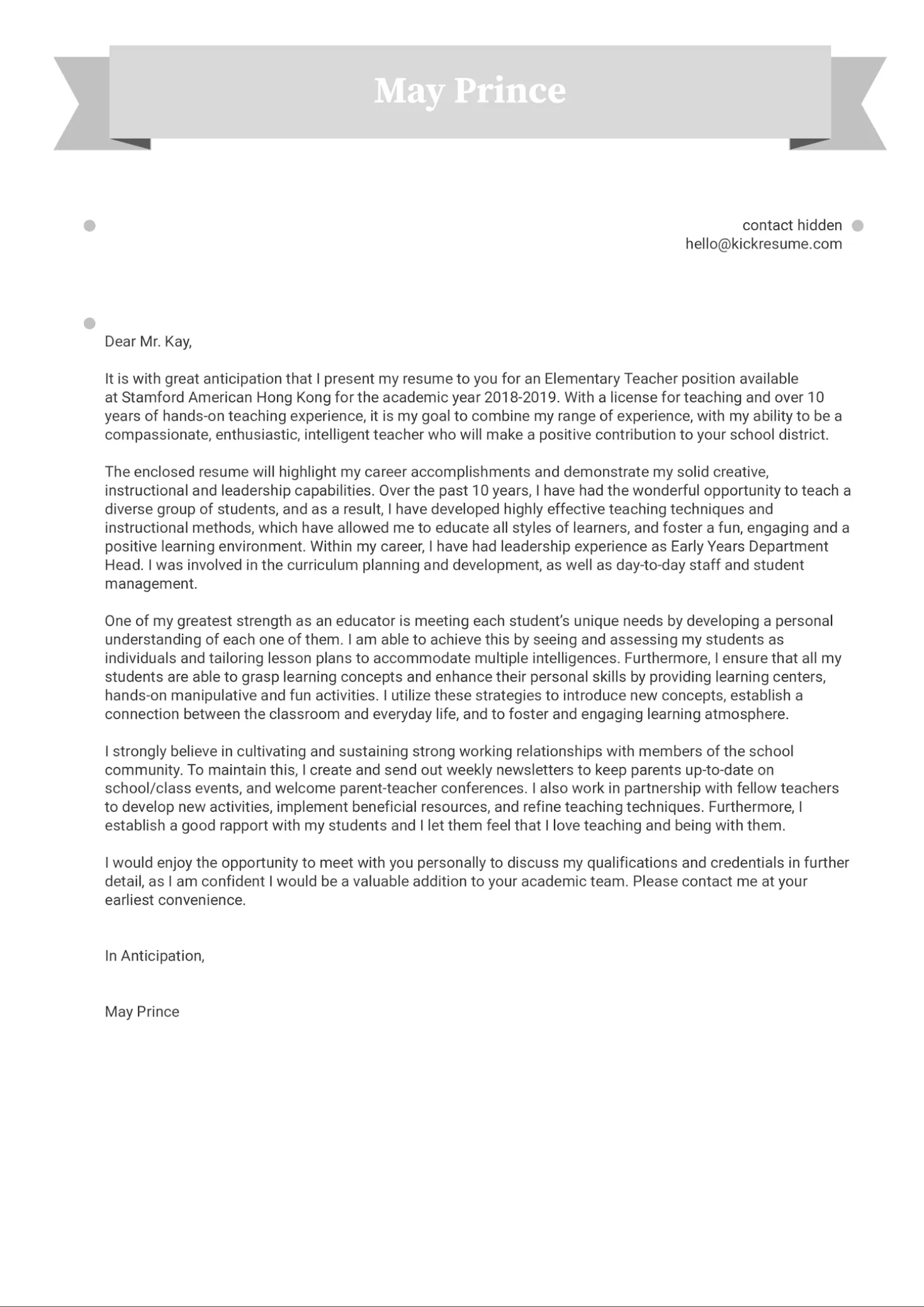
Start with your name, address, phone number, and email address at the top of the letter. Include the date and the recipient’s name, title, and address. This ensures the employer knows who you are and how to contact you. Accuracy is vital here; double-check all contact information to ensure there are no errors that could prevent the employer from reaching out to you.
The Salutation
Use a professional salutation, such as “Dear Mr./Ms./Mx. [Last Name],” if you know the hiring manager’s name. If you don’t, “Dear Hiring Manager” is a safe alternative. Avoid generic greetings like “To Whom It May Concern,” as they can make your letter seem impersonal. Research the school or district to find out the correct name of the hiring manager; showing this initiative is a good way to stand out.
Writing the Introductory Paragraph
Your introduction should immediately grab the reader’s attention. State the position you’re applying for and where you found the job posting. Briefly mention your key qualifications and express your enthusiasm for the opportunity. Make it clear why you’re interested in the specific school or district. Highlight something that resonates with you about their values, mission, or programs. This shows you’ve done your research and are genuinely interested.
Body Paragraphs [Skills and Achievements]
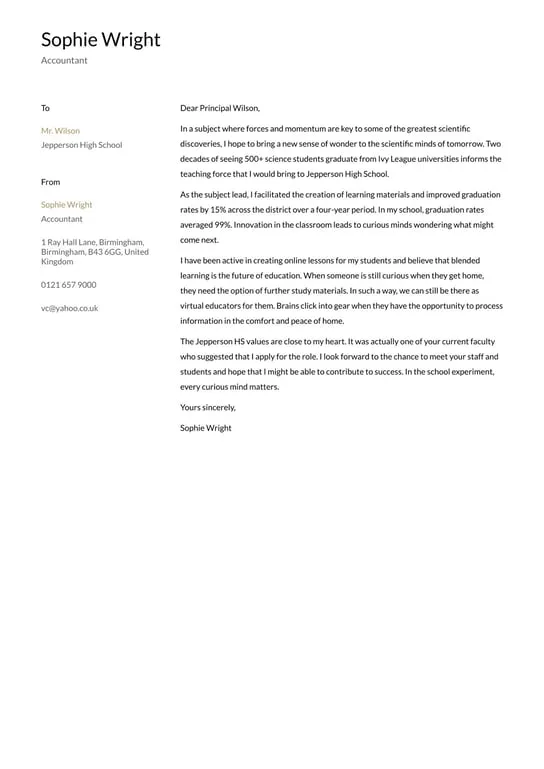
Use the body paragraphs to elaborate on your skills and experience. Focus on achievements and accomplishments that align with the job requirements. Provide specific examples of how you’ve positively impacted students. Use action verbs to describe your contributions. For example, instead of saying “I assisted students,” say “I mentored struggling students, resulting in a 15% improvement in their grades.” Show the employer what you can bring to the table.
The Closing Paragraph [Call to Action]
In your closing paragraph, reiterate your interest in the position and express your eagerness for an interview. Thank the hiring manager for their time and consideration. Include a call to action, such as “I am available for an interview at your earliest convenience.” Proofread your letter carefully to ensure it is free of errors and reflects your professionalism. This final touch reinforces your message and leaves a lasting impression.
Formatting Your Cover Letter
The appearance of your cover letter is just as important as its content. A well-formatted letter is easy to read and reflects your professionalism. Choose a clean and professional font, use appropriate margins, and keep your letter concise and to the point. A well-formatted cover letter shows you have attention to detail, and it can make a strong impression.
Font and Style Guidelines
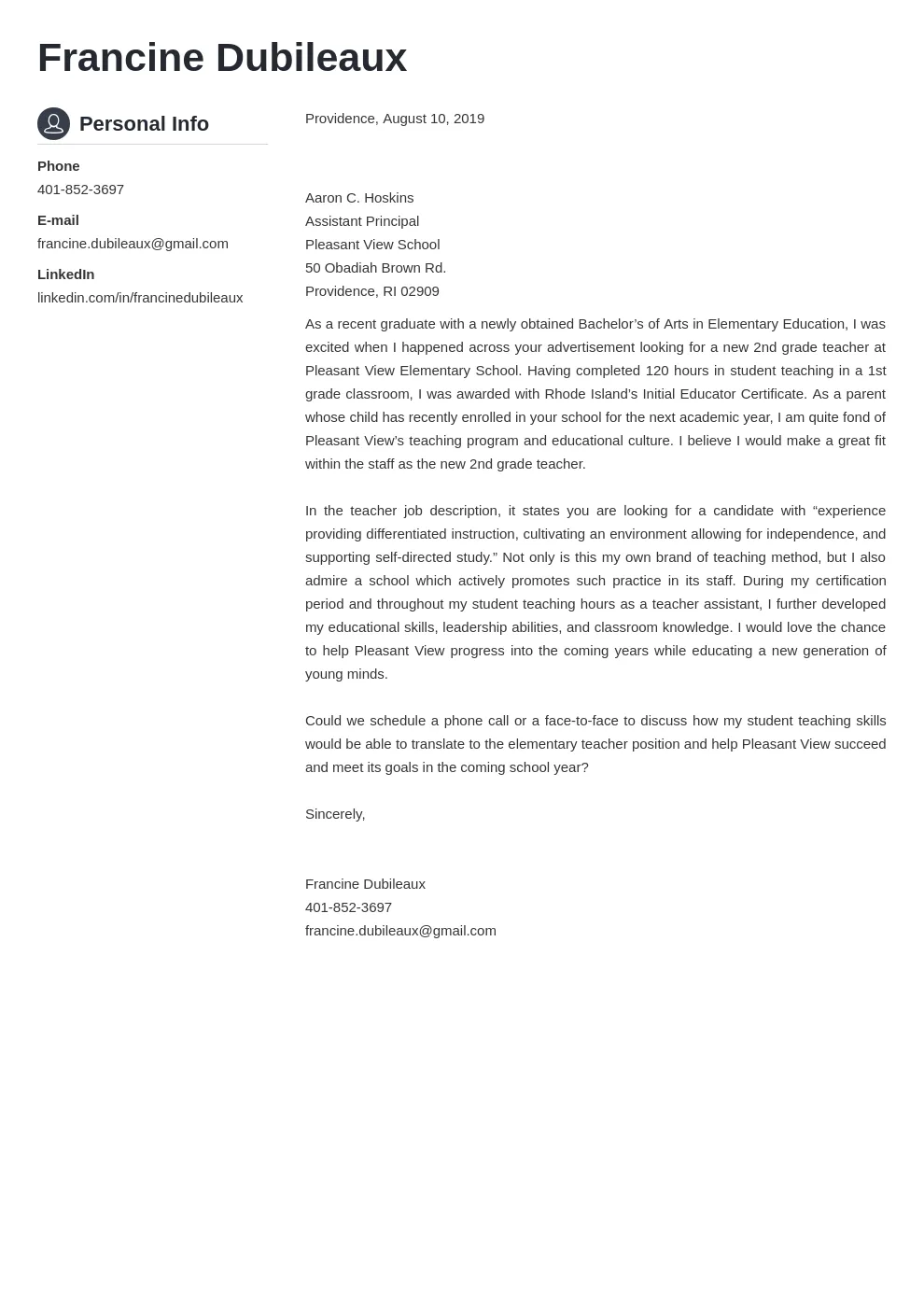
Select a professional font, such as Times New Roman, Arial, or Calibri, with a font size between 10 and 12 points. Use single-spacing for the body of the letter and double-spacing between paragraphs. Ensure your margins are one inch on all sides. Use bolding or italics sparingly to highlight key information. Use clear headings and bullet points where appropriate to make the information easy to scan. This will help the reader easily find important details about your qualifications.
Proofreading and Editing Your Cover Letter
Before submitting your cover letter, carefully proofread it for any errors in grammar, spelling, and punctuation. Read it aloud to catch any awkward phrasing or sentences that don’t flow smoothly. Ask a friend or colleague to review it as well; a fresh pair of eyes can often spot errors you may have missed. A well-proofread letter demonstrates your attention to detail and professionalism, which are essential qualities for a teacher.
Tips for Standing Out From the Crowd
With so many applicants, it’s crucial to find ways to make your cover letter stand out. Tailor your letter to each specific job, use strong keywords, showcase your passion, and demonstrate your value to the school. These tips will help you create a cover letter that gets noticed and makes a lasting impression. Remember to highlight what makes you unique and show why you are the best candidate.
Tailoring Your Cover Letter
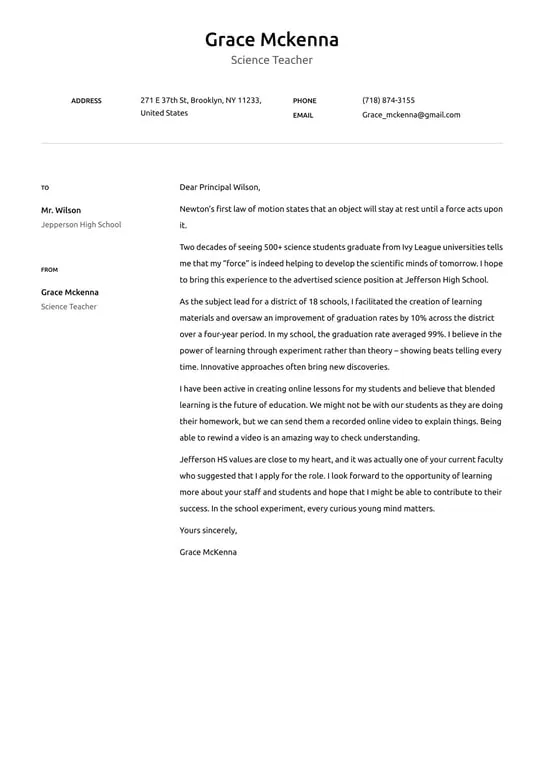
Avoid using a generic cover letter. Customize your letter for each job application. Research the school or district to understand their mission, values, and needs. Address the specific requirements mentioned in the job description and highlight how your skills and experience align with those needs. Mention specific programs or initiatives that interest you. Demonstrating this tailored approach shows you are genuinely interested in the position and have taken the time to understand the school’s requirements.
Using Keywords and Action Verbs
Use keywords from the job description to highlight your relevant skills and experience. Review the job posting and identify key terms that the employer is looking for. Incorporate these keywords naturally into your cover letter. Use strong action verbs to describe your accomplishments. For example, instead of saying “I was responsible for,” use words like “developed,” “implemented,” “managed,” or “achieved.” These verbs will make your qualifications sound more dynamic and persuasive. These keywords will help your application get noticed by applicant tracking systems (ATS).
Showcasing Your Passion for Teaching
Express your enthusiasm for teaching and your commitment to student success. Share your teaching philosophy and explain what motivates you. Give specific examples of how you have created a positive and engaging learning environment. Demonstrate your ability to connect with students and inspire them. Show your passion by discussing your favorite teaching methods, classroom management techniques, and any innovative projects you’ve implemented. Employers seek teachers who are truly dedicated to the profession.
Teacher Cover Letter Examples
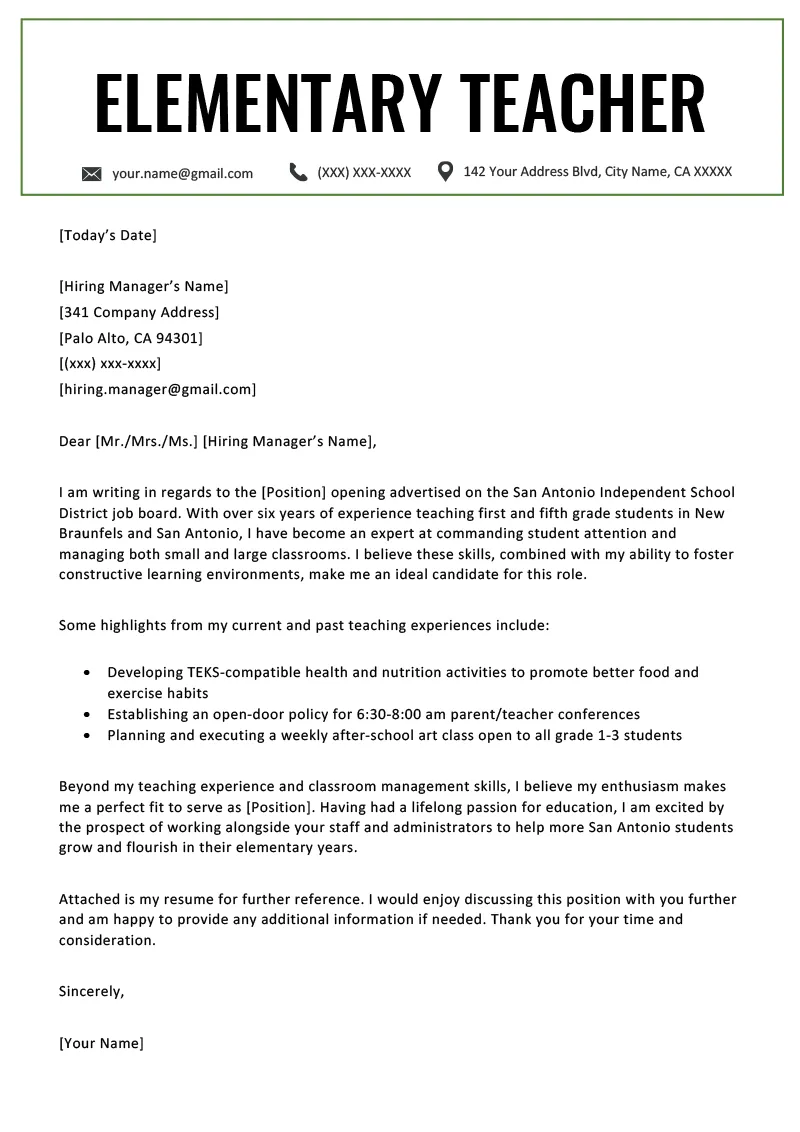
Reviewing cover letter examples can help you visualize the structure and content of a successful cover letter. Customize these examples to reflect your own unique skills, experiences, and the specific requirements of each job. Remember to adapt the examples to suit your individual circumstances and teaching experience. The examples below provide a starting point for crafting a cover letter that captures attention and makes you stand out.
Example 1 Cover Letter for Elementary School Teacher
Dear Hiring Manager, I am writing to express my keen interest in the Elementary School Teacher position advertised on [Platform]. With five years of experience in elementary education and a Master’s degree in Education, I am confident in my ability to create a stimulating and supportive learning environment for young children. In my previous role at [School Name], I successfully implemented a new reading program, leading to a 20% improvement in students’ reading comprehension scores. I am passionate about fostering a love of learning in children and believe my skills and experience align perfectly with the values of [School Name]. I am excited by the opportunity to contribute to your school community.
Example 2 Cover Letter for High School Teacher
Dear Hiring Committee, I am writing to express my interest in the High School English Teacher position at [School Name]. As a dedicated and experienced educator with a Bachelor’s degree in English and a passion for literature, I am eager to share my knowledge and enthusiasm with high school students. At [Previous School], I developed and taught an engaging curriculum that increased student participation and improved standardized test scores. I am committed to creating a challenging and supportive learning environment where students can excel and reach their full potential. I am available for an interview at your convenience.
Example 3 Cover Letter for Special Education Teacher
Dear Principal [Principal’s Last Name], I am writing to apply for the Special Education Teacher position at [School Name], as advertised on [Platform]. I have a Master’s degree in Special Education and five years of experience supporting students with diverse learning needs. My skills include [List specific skills, such as IEP development, differentiated instruction, and behavior management]. In my previous role, I developed individualized education plans (IEPs) and implemented strategies that significantly improved students’ academic and social-emotional outcomes. I am eager to join a school that values inclusivity and provides a supportive learning environment. I look forward to the possibility of discussing my qualifications further.
Common Mistakes to Avoid
Avoiding common mistakes can significantly enhance your cover letter and increase your chances of getting an interview. Pay close attention to the content, formatting, and tone of your letter. Be sure to personalize it for each job application. By avoiding these errors, you can make a strong impression and increase the likelihood of landing your dream teaching job.
Generic Cover Letters
Avoid using a generic cover letter that you send to every school or district. Tailor your letter to each specific job and school by mentioning the school’s mission, values, and specific needs. Doing some research about the school or district helps the hiring managers to understand that you are genuinely interested in their specific environment. This personalization is a key element in setting your application apart from the competition.
Typos and Grammatical Errors
Carelessly written cover letters with typos or grammatical errors demonstrate a lack of attention to detail and can make you appear unprofessional. Before submitting your cover letter, carefully proofread it multiple times to ensure that there are no errors. Use a grammar and spell-checking tool, and ask a trusted friend or colleague to review your letter for you. A polished, error-free cover letter shows the employer you are professional and detail-oriented.
Focusing on Yourself Too Much
While it is important to highlight your skills and experience, avoid making your cover letter all about you. Instead, focus on how you can meet the needs of the school and how your skills and experiences will benefit the students and the school. Mention the programs or initiatives the school uses and how your skills align with their needs. Always focus on how your contributions will help the school and the students. This helps the employer see you as a solution and adds value.
Conclusion
Writing a compelling teacher cover letter is crucial for making a strong first impression and securing your dream teaching job. By following these tips, using the examples provided, and avoiding common mistakes, you can create a cover letter that showcases your unique qualifications, highlights your experience, and expresses your passion for teaching. Remember to tailor your letter to each job, use keywords and action verbs, and always proofread carefully. By following these guidelines, you will be well on your way to success in your job search. Good luck!
